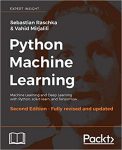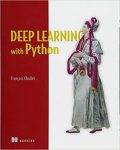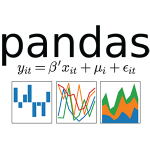Biomedical Data Science – Fall 2018
Books


Tools





Introduction
A summary paragraph should be provided on each paper, mostly reflecting your “criticism” of the paper, you can also discuss how it could be improved.
Discussion Topic: Replication, Transparency, and Proper Experiment Design for ML Applications
-
- Somashekhar, S. P., M-J. Sepúlveda, S. Puglielli, A. D. Norden, E. H. Shortliffe, C. Rohit Kumar, A. Rauthan et al. “Watson for Oncology and breast cancer treatment recommendations: agreement with an expert multidisciplinary tumor board.” Annals of Oncology 29, no. 2 (2018): 418-423. Link
- Bonus, see: Does global oncology need artificial intelligence?, Link
- Somashekhar, S. P., M-J. Sepúlveda, S. Puglielli, A. D. Norden, E. H. Shortliffe, C. Rohit Kumar, A. Rauthan et al. “Watson for Oncology and breast cancer treatment recommendations: agreement with an expert multidisciplinary tumor board.” Annals of Oncology 29, no. 2 (2018): 418-423. Link
Discussion Topic: Critical Care Scores, Physiological Signals, Challenges of Real-Time Systems
-
- Henry, Katharine E., David N. Hager, Peter J. Pronovost, and Suchi Saria. “A targeted real-time early warning score (TREWScore) for septic shock.” Science translational medicine 7, no. 299 (2015): 299ra122-299ra122. Link
Discussion Topic: EHR Bias and Issues for ML
-
- Pivovarov, Rimma, David J. Albers, Jorge L. Sepulveda, and Noémie Elhadad. “Identifying and mitigating biases in EHR laboratory tests.” Journal of biomedical informatics 51 (2014): 24-34. Link
Python Notebooks are adopted based on the following sources (with some changes):
- GitHub Repo, Python Machine Learning book
- GitHub Repo, Lectures on scientific computing with Python
HW will be provided on UF Canvas Website.
Basic Machine Learning
-
- Machine Learning: Lecture 8
-
- Feature Selection: Lecture 9
-
- Evaluation Strategies: Lecture 10
-
- Classification: Lecture 11
-
- Support Vector Machines (SVM): Lecture 12
Discussion Topic: Using Claim Data with ML models, Larger datasets
- Razavian, Narges, Saul Blecker, Ann Marie Schmidt, Aaron Smith-McLallen, Somesh Nigam, and David Sontag. “Population-level prediction of type 2 diabetes from claims data and analysis of risk factors.” Big Data 3, no. 4 (2015): 277-287. Link
Discussion Topic: Temporal Models, Trends Pitfalls, Google Flu Trends
- Wu, Hongyan, Yunpeng Cai, Yongsheng Wu, Ren Zhong, Qi Li, Jing Zheng, Denan Lin, and Ye Li. “Time series analysis of weekly influenza-like illness rate using a one-year period of factors in random forest regression.” Bioscience trends(2017). Link
Discussion Topic: Using EHR for Prediction tasks, importance of external validation
- Wong, Andrew, Albert T. Young, April S. Liang, Ralph Gonzales, Vanja C. Douglas, and Dexter Hadley. “Development and validation of an electronic health record–based machine learning model to estimate delirium risk in newly hospitalized patients without known cognitive impairment.” JAMA network open 1, no. 4 (2018): e181018-e181018. Link
Python Notebooks are adopted based on the following sources (with some changes):
- GitHub Repo, Python Machine Learning book
HW will be provided on UF Canvas Website.
More Advanced Machine Learning
-
- Neural Network (NN): Lecture 13
-
- Deep Learning (based on Stanford CS231n): Lecture 14
-
- ConvNet (based on Stanford CS231n): Lecture 15
-
- Recurrent Networks (based on Stanford CS231n): Lecture 16
Discussion Topic: Using ConvNet for Diagnostic Tasks, Hierarchical Diagnosis Trees
-
- Esteva, Andre, Brett Kuprel, Roberto A. Novoa, Justin Ko, Susan M. Swetter, Helen M. Blau, and Sebastian Thrun. “Dermatologist-level classification of skin cancer with deep neural networks.” Nature 542, no. 7639 (2017): 115. Link
Discussion Topic: Using ConvNets with 3D Imaging Data
-
-
- Nie, Dong, Han Zhang, Ehsan Adeli, Luyan Liu, and Dinggang Shen. “3D deep learning for multi-modal imaging-guided survival time prediction of brain tumor patients.” In International Conference on Medical Image Computing and Computer-Assisted Intervention, pp. 212-220. Springer, Cham, 2016. Link
-
Python Notebooks are adopted based on the following sources (with some changes):
- GitHub Repo, Python Machine Learning book
HW will be provided on UF Canvas Website.
Natural Language Processing (NLP)
Discussion Topic: Using RNN for Processing Clinical Notes
- Jagannatha, Abhyuday N., and Hong Yu. “Bidirectional RNN for medical event detection in electronic health records.” In Proceedings of the conference. Association for Computational Linguistics. North American Chapter. Meeting, vol. 2016, p. 473. NIH Public Access, 2016. Link
HW will be provided on UF Canvas Website.
Resources
- Stanford CS231N: Course Website
- MIT Machine Learning for Healthcare: Course Website
- Python Machine Learning book: GitHub Repo,
- Lectures on scientific computing with Python: GitHub Repo,
